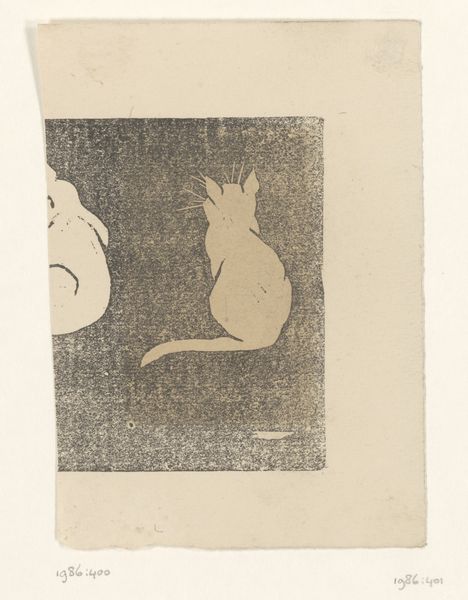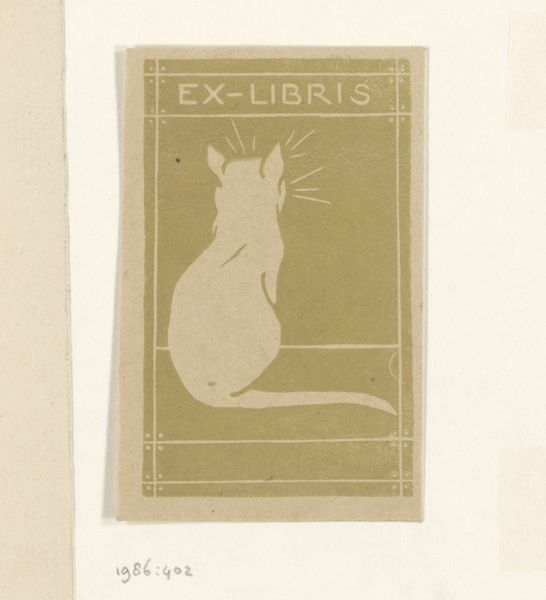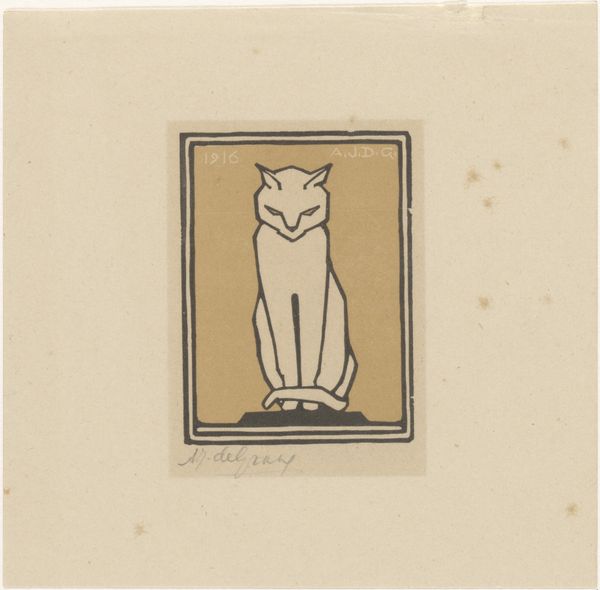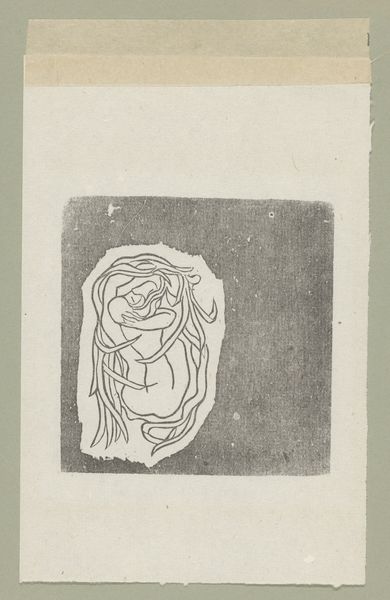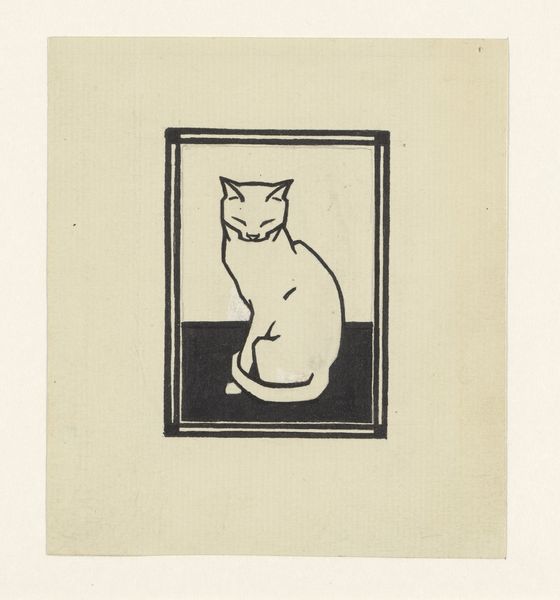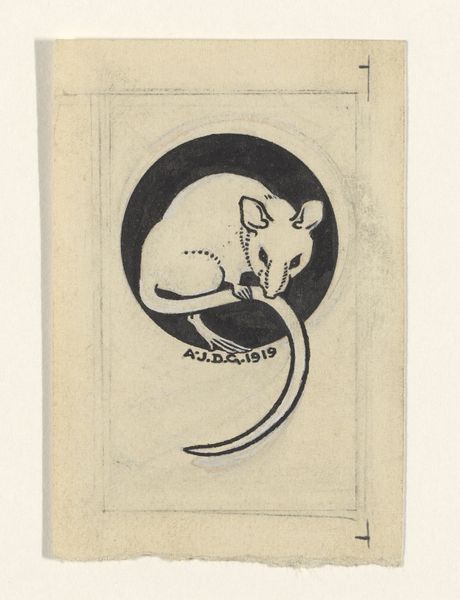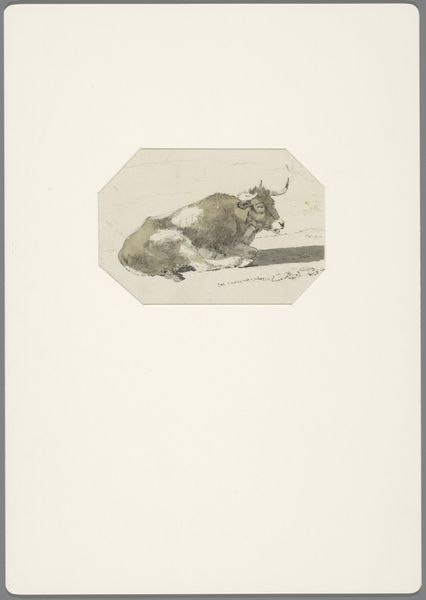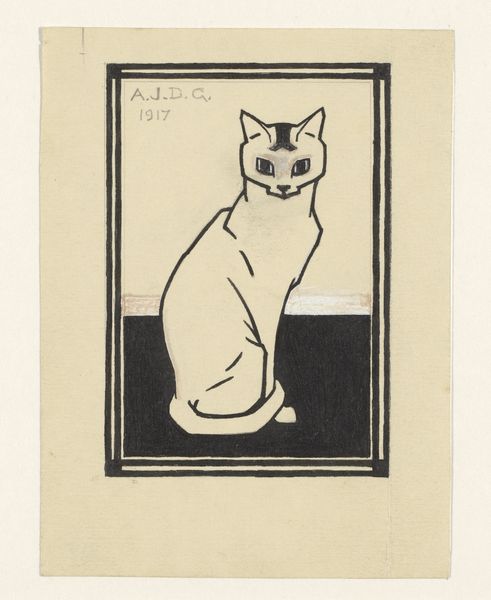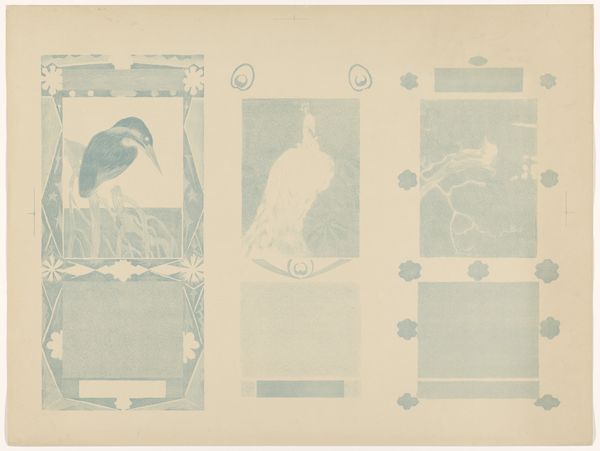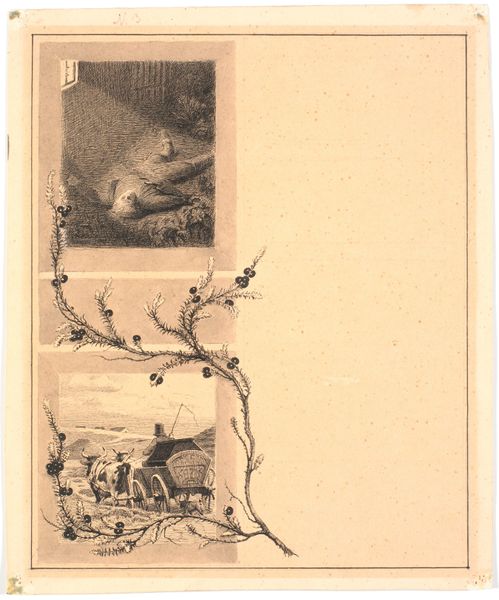
print, linocut
#
animal
# print
#
linocut
#
geometric
Dimensions: height 148 mm, width 115 mm
Copyright: Rijks Museum: Open Domain
Editor: Here we have "Cat Seen From the Back," a linocut print by Reinier Willem Petrus de Vries, dating sometime between 1884 and 1952. It's surprisingly modern for its time, so simplified, almost geometric. I’m struck by how graphic it is, like a logo or emblem. What do you see in this piece from a historical perspective? Curator: What interests me is how an everyday subject, like a cat, gets elevated to the level of art. Printmaking made art more accessible, shifting its social role. Imagine how this image might have circulated – perhaps in magazines or as affordable art for ordinary homes. Do you think the style reinforces this democratizing effect? Editor: Definitely. The clean lines and simple shapes make it feel accessible, not intimidating like some classical art. But also, do you think that printing multiple of these takes away from it's value as an artwork? Curator: Well, the question of originality is central to art history. Early 20th-century printmaking challenges the traditional idea of the unique artwork, influencing the perception of mass production and distribution within culture. The politics of imagery shift with reproducibility, opening access to some, reducing the unique experience of art for others. Who do you imagine buying something like this and why? Editor: I picture a young professional, maybe a teacher or someone interested in design, drawn to its simplicity and affordability. Someone wanting art but with a modern aesthetic sensibility. Curator: Precisely! Its graphic style fits perfectly into early-twentieth-century discussions of function and form, appealing to someone engaging with social and cultural debates about modernity and design. How do these historical context make you reconsider the original impression? Editor: It makes me appreciate the radical nature of its simplicity, how it challenged artistic norms and social expectations. I thought the piece looked more "artsy", but it sounds like this cat was kind of punk rock. Curator: Absolutely! And I'm reminded that even the simplest images carry layers of cultural and historical meaning, constantly evolving based on societal contexts.
Comments
No comments
Be the first to comment and join the conversation on the ultimate creative platform.
